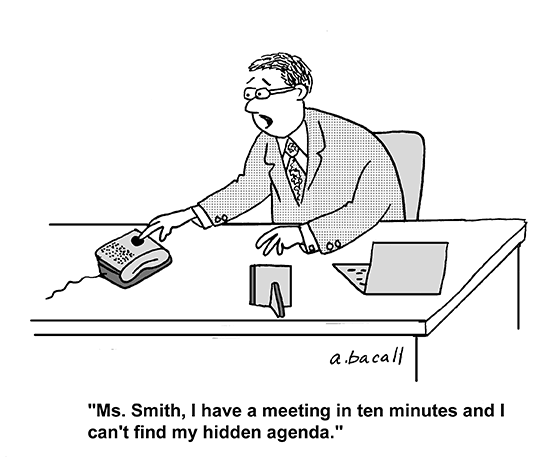Fast, Fun, and Powerful: Design Sprints

Introducing Douglas Ferguson
The Lucid Meetings team is delighted to welcome our newest contributor, Douglas Ferguson. Douglas Ferguson is the president of Voltage Control, an Austin-based agency that specializes in Innovation Transformation.
We were introduced to Douglas through our network as the go-to facilitator to bring in when you want to run a Design Sprint.
What’s a Design Sprint? In this post, Douglas tells us all about it.
— Team Lucid
We often know what we should do or what we want to do to make our product and services better. But, we don’t. Instead, what we have to do and what’s on fire at-the-moment usually takes precedence. So, when we want to make big shifts, it’s all about carving out time and focus. Design Sprints give you both.
Let me give you an example from one of my favorite Design Sprints: on-demand meal delivery company Favor asked me to facilitate a Design Sprint last year. They wanted to focus on how to improve the earnings of their “Runners” (the people who deliver the meals) by 10% while also cutting the number of Runners who found the job frustrating by half.
Tackling this problem with design had been on their mind, but they just hadn’t gotten to it. By dedicating time for a Design Sprint, they were able to kickstart important improvements.
“We started with all these ideas about what our users wanted and needed in the next version of our app. The design sprint made us rapidly validate these assumptions instead of getting months down the road and realizing we were designing things our users didn’t want or need. In one week, we were able to build a solid foundation for our redesign from real user feedback.”
-Meg Nidever, UX Designer, Favor Delivery
Even better, the Sprint experience led to a renewed dedication to prototyping and user testing for the Favor team.
What is a Design Sprint?
A Design Sprint is like an all-inclusive retreat for your next great business idea. This timeboxed, self-contained process allows teams the opportunity to consider an existing problem or a new idea, gather insights on potential or current users, prototype ideas, and validate them all within about five days.
The Design Sprint framework is lightweight enough that it can be applied to any number of scenarios whether your company is considering a new product or the design of a service offering. It takes the principles of design thinking and distills them down into a rapid process that allows teams to put theory into practice and get hands-on experience in a customer-centric way of working.
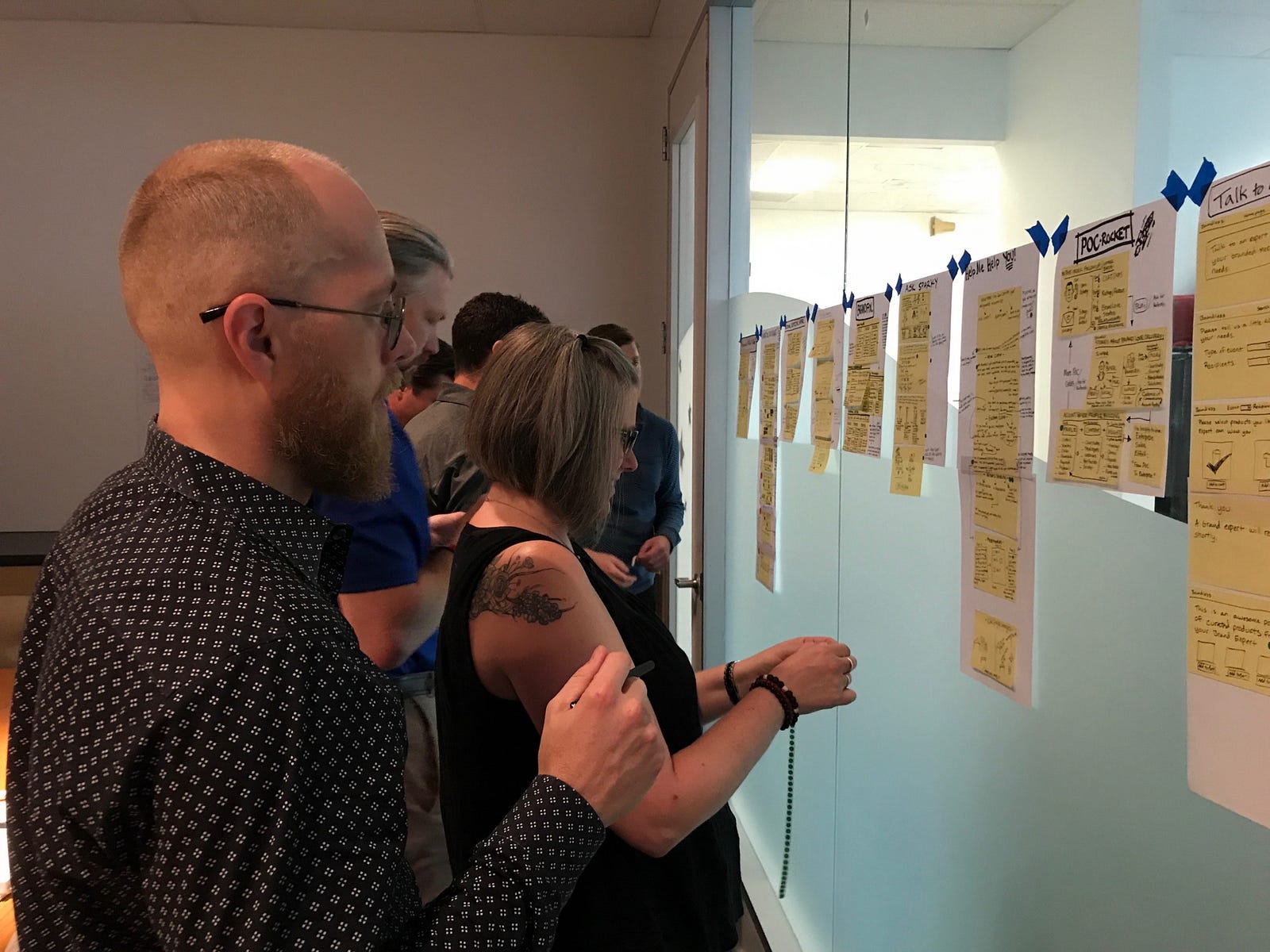
Design Sprint Basics:
- A cross-functional team of approximately seven people
- A 5-day time commitment
- Space where the team can meet together daily
- A facilitator who knows the process well
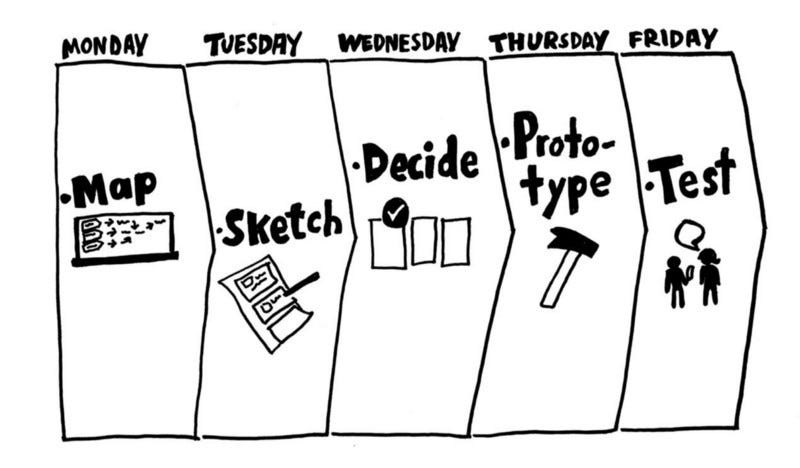
Google Ventures, the creators of the Design Sprint, summarize the 5-day process this way:
“On Monday, you’ll map out the problem and pick an important place to focus.
On Tuesday, you’ll sketch competing solutions on paper.
On Wednesday, you’ll make difficult decisions and turn your ideas into a testable hypothesis.
On Thursday, you’ll hammer out a high-fidelity prototype.
And on Friday, you’ll test it with real live humans.”
By having everyone participate in the sketching process on Day 2, the Design Sprint promotes diversity of thought, allowing new ideas to surface and preventing groupthink from altering the discussion.
While it may seem unbelievable that a small team could devise and test a solution in such a short amount of time, you’ll be surprised to see how much energy a Design Sprint can inject—especially for projects that have been dragging on for months.
The benefits of a Design Sprint are numerous, especially when paired with a skilled facilitator.

Benefits of a Design Sprint
- Speed: Having an endpoint only five days away can limit lengthy debate and provide the impetus to seek validation for ideas quickly.
- Feedback: Toward the end of the Sprint, real users vet your ideas before you’ve invested too much time or money into building them.
- Collaboration: By learning new ways of working and thinking together, teams can grow more collaborative and build stronger relationships.
- Support: Prototyping, even if it’s a simple drawing on paper, takes ideas out of your team’s heads and puts them out into the world where they can be discussed and gain support from colleagues outside the Design Sprint team.
Is a Design Sprint right for my group?
Design Sprints have been used for everything from websites to industrial pumps. They are perfect for new business ideas that require a significant amount of time and effort (and thus cost) to get right without a clear place to get started. At the end of five days, teams can move forward with the confidence that they’ve explored competing ideas and have received feedback from the people who will ultimately adopt their new design.
When building your Sprint team, there are a few key roles to include so that the necessary expertise is readily available throughout the Sprint.
- Decider — the person who makes decisions for the team throughout the Sprint
- Finance
- Marketing
- Customer Service
- Technical
- Design
- Facilitator — this person helps manage time and conversations and can be internal or brought in for the Sprint
In addition to these roles, you may need to bring in guest speakers at critical moments to contribute additional expertise.
We encourage our clients to invite the rest of their team into the Sprint room at the end of each day to see and discuss the team’s work. This process, which we call “walking the walls,” allows people outside the core team to be involved in the process and often inspires more significant support for the outcome.
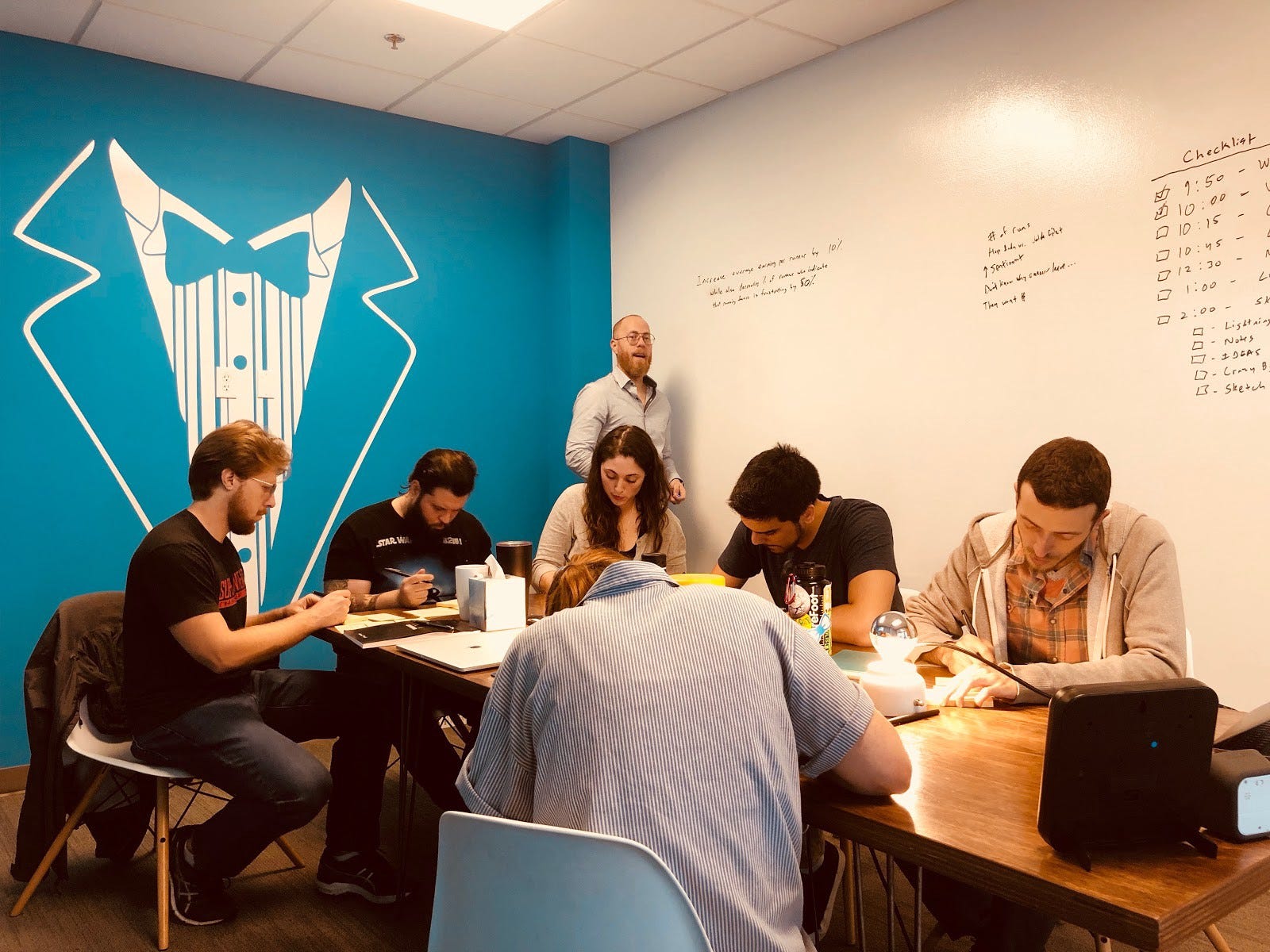
Why Design Sprints Work
The power of Design Sprints can be attributed to the tight deadline, cross-team collaboration, and rapid prototyping and feedback process.
The five-day duration leaves very little room for ongoing debate. Instead of endless conversation, teams identify assumptions and turn challenges into questions. Suggestions for reasons why the problem “can’t” be solved are transformed into questions about how they might be solved.
The cross-team collaboration paints a more accurate picture of the problem and business context than any one person could do alone; this means that difficult challenges can be solved on paper before changing them is too costly. By bringing valuable knowledge that’s spread across your organization into one room, you can limit the time it takes to solve a problem and accomplish a month’s worth of work in one week.
The rapid prototyping and feedback process provides a clear signal of whether or not the idea meets a market need. It also lowers the chance that the final product fails at launch. Since prototyping involves only mocking up the piece with which a user would interact, it can be done quickly without the need for the polish and functionality of an end product. The goal is to validate or invalidate your assumptions and determine if the solution is headed in the right direction.
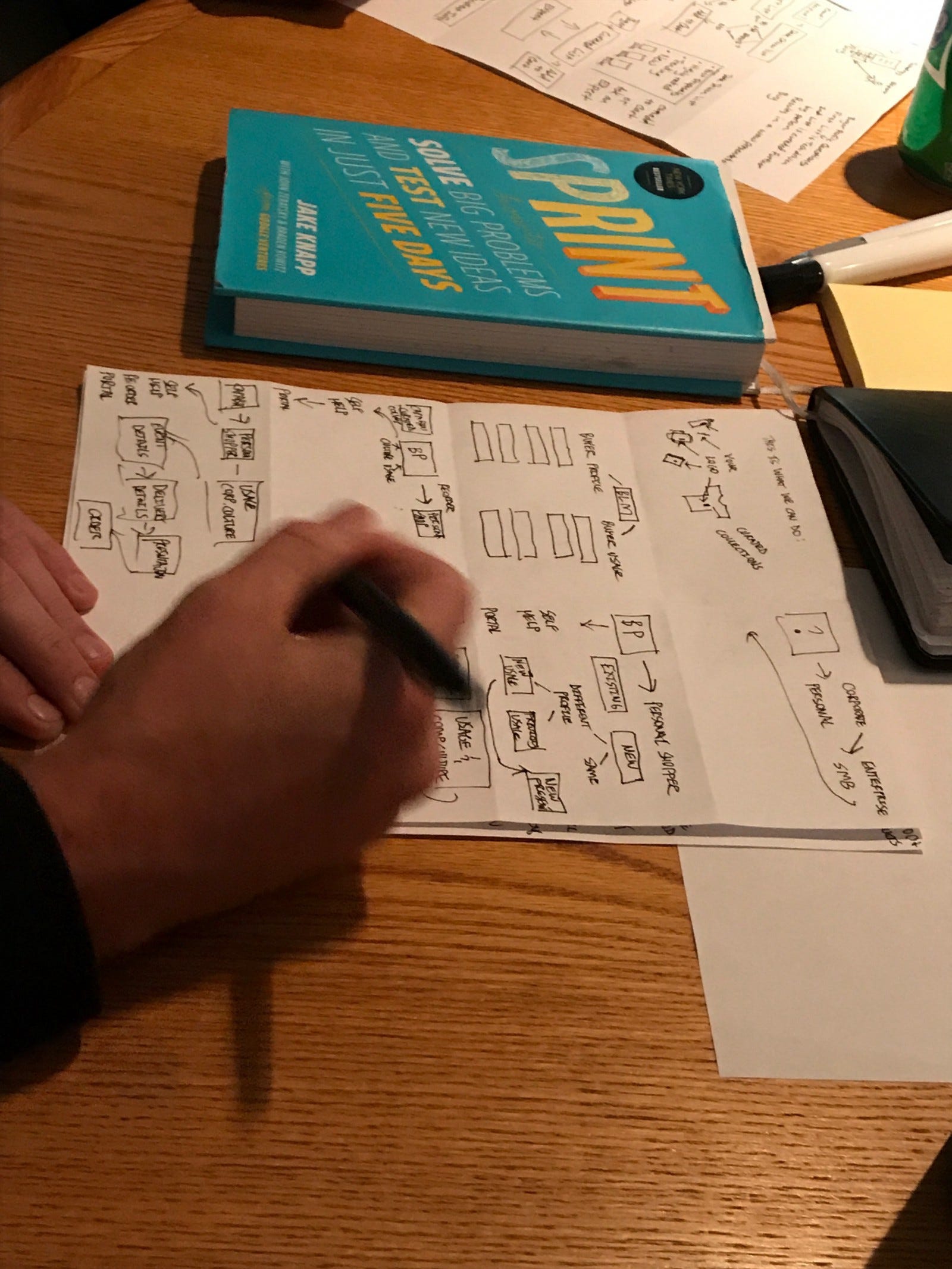
Preparation Is Key
Five days is a short window, so it’s essential to be prepared in advance of your Sprint’s day one. Here are some logistical details that will contribute to the success of your Sprint:
- Find a space the team can call home for all five days — ideally something separate from their daily workspace.
- Two large whiteboards (or more) are ideal for capturing ideas throughout the week. Giant Post-it pads are a good substitute if whiteboards aren’t available.
- Provide supportive supplies like Sharpies, Post-it notes, dot stickers for voting on ideas, and copy paper for sketching.
- Water, drinks, and healthy snacks will help keep the energy up in the team room and support mental clarity.
- Consider catering breakfast and lunch so the team can recharge midday without stress.
Google Ventures has facilitated Design Sprints for companies like Nest and Medium, and here at Voltage Control, we’ve facilitated Design Sprints for companies like Favor and Liberty Mutual. No matter what your challenge, Design Sprints can help you define your goals, brainstorm ideas, and test their resilience in an ever-changing market.
If you’d like to try a Design Sprint at your company, we highly recommend the book Sprint by Jake Knapp and John Zeratsky. To learn more about how a Design Sprint facilitator can help you get even more value, check out our post, A Design Sprint Facilitator is the Guru You Need.


